New Pomerelia
This article or section is in the process of an expansion or major restructuring. You are welcome to assist in its construction by editing it as well. If this article or section has not been edited in several days, please remove this template. If you are the editor who added this template and you are actively editing, please be sure to replace this template with {{in use}} during the active editing session. Click on the link for template parameters to use.
This article was last edited by Centrist16 (talk | contribs). (Update) |
| New Pomerelia Nepomerka | |
|---|---|
| Oriental Republic of Cisplatina | |
 Location of New Pomerelia in the United Provinces | |
| Country | Cisplatina |
| Official Languages | English, Pomerelian |
| Capital | St. Rybicki |
| Government | |
| • Governor | James Kosciusko-Engels (CSDP) |
| • Senator | David Rudasz-Kahnwald (N) |
| Population (2015)UTC−3 | |
| • Total | 9,109,280 |
| • Rank | 7 |
| Demonym(s) | Pomerelian |
| Time zone | UTC−3 |
| Website | www.nepomerka.com.cp |
- This article is about the oriental republic of Cisplatina. For the similar sounding state of Poland-Lithuania, see Pomerania.
New Pomerelia (Pomerelian: Nepomerka, German: Neue Pomerelia, Polish: Nowa Pomerka, Lithuanian: Nauja Pomerelija) is a province and oriental republic located in the south-east of the United Provinces, bordered by Paraná to the west, Paiagua to the north, TBC and Edessea to the north-east, and New Cumbria to the south-east. As one of five maritime provinces in Cisplatina, New Pomereria has a small coastline on the Mieczko Sea and also provides the outsource of Cisplatina's three largest rivers - the Masson, Paraná, and Paraguay rivers, each of which have formed a pivotal rule throughout the history and settlement of the United Provinces. New Pomerelia's capital and largest city, St. Rybicki, is the third largest city in Cisplatina (behind only TBC and TBC) and is a leading center of education within South America, being home to the historic University of St. Rybicki as well as a vibrant and developing multi-cultural cultural scene. Long considered the bohemian capital of the United Provinces, St. Rybicki has historically been a center for the arts, political movements, and a dynamic youth culture which has given it a reputation as Cisplatina's 'wild city'. Outside of St. Rybicki, the province of New Pomerelia as a whole also functions as one of the largest agricultural producers in the United Provinces, supported by the highly fertile regions of the Masson River watershed, with other important civic centers for industry including Nowydom in the department of Lower Uraguay, Miłberg in Ibici, and Elda in New Prussia.
What is now New Pomerelia was first settled primarily by the native Amerindian Guaraní, Charrúa, Chaná, and Kaingang peoples, who at various times inhabited regions between New Pomerelia's three key rivers - the Masson, Paraguay, and Paraná. As a result of later colonisation of the region, little is known of the proto-history of the native peoples of New Pomerelia, although no major archaeological remains from any large-scale civilisations similar to those of the Aztecs or Incas have been uncovered, suggesting a nomadic way of life in early New Pomerelia. The first European settlers to arrive in New Pomerelia after its initial discovery by the Knights Hospitaller were Polish-Lithuanian Calvinists fleeing the counter-reformation against protestants in central Europe in 1558. The first of these, headed by the notable Calvinist theologian and explorer Piotr Mieczko, secured rights from the Knights Hospitaller based in Aubusson (now the capital of Edessa) to establish free religious settlements further south. Shortly thereafter, Mieczko commenced a voyage along the Masson River, establishing the town of Nowydom (now the capital of Lower Uraguay) and beginning agricultural redevelopment of nearby land on the banks of the lower Masson. Attracting others persecuted as a result of religious tension within Poland-Lithuania, many others soon made their way across the Atlantic to settle at Nowydom and other nearby towns, establishing what would become a fast growing Polish-speaking protestant settlement. In Lithuania and East Prussia, ethnic German and Lithuanian protestants who sought religious refuge without their ethnic subjugation to the Polish, as was commonplace in Poland-Lithuania itself, also traveled to the growing colony, which had by this time been named New Pomerelia. By the late 16th century, these German and Lithuanian communities had secured rights to settlement further along the Masson River, including in what is now New Prussia and Kashubia.
As the 17th century progressed, New Pomerelia remained in a relatively stable state of steady growth, albeit remained a small territory based along the Masson River. In accordance with the Treaty of Tordesillas of 1494, all territories belonging to papal organisations, including the Knights Hospitaller, would be exempt from colonial division between Spain and Portugal. As a result, New Pomerelia, as a de jure papal territory, was spared the expansion of Spanish Argentina into its relatively small domain of influence. Around the beginning of the 18th century, and rising more sharply with the commencement of the Polish-Lithuanian Wars of Constitution in 1737, emigration from Poland-Lithuania and Prussia to New Pomerelia began to increased drastically. Further settlements were established and the province's capital was moved from Nowydom to the larger and better located town of St. Rybicki further inland, which quickly grew as a result. Concurrently, a separate New Pomerelian (as opposed to Polish-Lithuanian) identity was being established with the formation of a German-Polish creole known as Pomerelian, which came into general use by the New Pomerelian settlers.
Rough History (to be incorporated):
- 1494, treaty of tordesillas
- 1558, first founding of settlements in Nowydom by Polish-Lithuanian calvanists
- Beginning around 1737 emigration from Poland-Lithuania gradually increases as a result of the Polish-Lithuanian Wars of Constitution, with many loyalist szlachta establishing large holdings along the river Masson.
- 1798, the Knights Hospitaller order collapses. New Pomerelia as being a holding of the Knights and thus of the Pope is thus void, and hence free for invasion by the Spanish. Later that year the spanish conquer New Pomerelia.
- 1810, Argentine wars for independence begin, which would later result in the independence of the UP.
Etymology
History
Geography
Politics
Administrative Divisions
| Flag | Department | Native Name | Population (2017 census) | Capital | Map |
|---|---|---|---|---|---|
| East Kashubia-Ibera | Ostkaszubia-Ibera | 726,380 | Ibera | 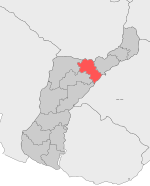
| |
| Ibici | Ibici | 726,380 | Miłberg | 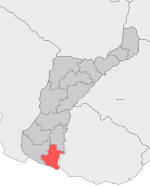
| |
| Igazu | Igacu | 726,380 | Fall | 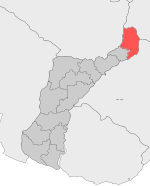
| |
| Jabłkoberg | Jabłkoberg | 726,380 | Cytrybau | 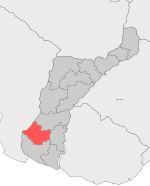
| |
| Jasereta | Iasyreta | 726,380 | Ariana | 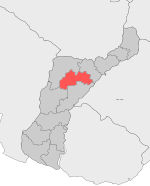
| |
| Kashubia | Kaszubia | 726,380 | Heiberg | 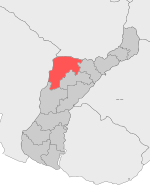
| |
| Lower Uruguay | Miłurugwaj | 726,380 | Nowydom | 
| |
| New Kielce | Nekielce | 726,380 | New Kielce | 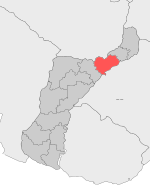
| |
| New Prussia | Nepruszy | 726,380 | Elda | 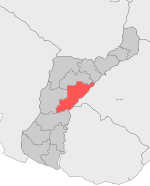
| |
| New Silesia | Neszlaska | 726,380 | Głalecberg | 
| |
| Rakowberg | Rakówberg | 726,380 | St. Andrzej | 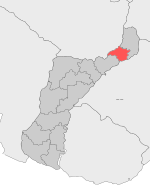
| |
| South Masuria | Zudmazury | 726,380 | St. Ełukas | 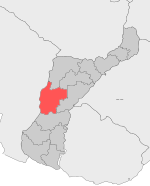
| |
| South Prussia-Rzekiberg | Zudpruszy-Rzekiberg | 726,380 | St. Piotr | 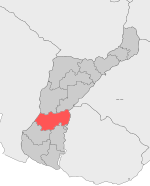
| |
| St. Rybicki | St. Rybicki | 726,380 | St. Rybicki | 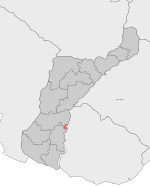
|